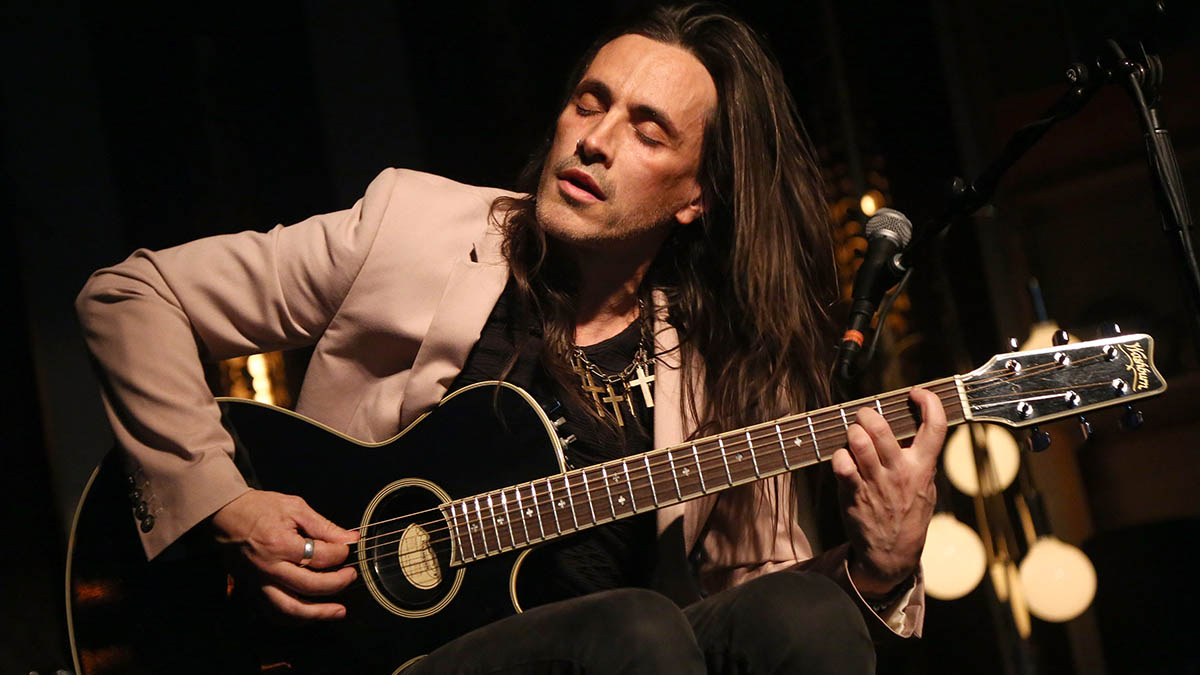Nuno Bettencourt says Extreme used a demo recording for their smash-hit Hole Hearted, and the guitar was recorded via a headset mic taped to his knee
“It goes to show you that even if a song is done on a little recorder on your basement at home, it can still go Top Five worldwide,” says Bettencourt

Sometimes the biggest hits have the most unorthodox beginnings, and so it was with Extreme’s Hole Hearted. Taken from the Boston rockers’ sophomore album, Extreme II: Pornograffiti, Hole Hearted is a dreamy track led by 12-string acoustic and loosely inspired by Led Zeppelin III that captured the imagination of the record-buying public.
Extreme tracked Pornograffiti at the legendary Scream Studios, in Los Angeles, where all mod cons were available to them. But in conversation with SiriusXM’s Eddie Trunk, guitarist Nuno Bettencourt has revealed that what we are hearing on the record was a cassette demo tracked in frontman Gary Cherone’s basement.
And he says the experience taught the band a valuable lesson: that sometimes you just can’t replicate the magic that happens the first time you track a song to tape. Demo recordings, they decided, are counterproductive.
“We don’t do demos,” said Bettencourt. “I hate demos, because you can never recapture the magic from the first time we record a song, so we just go all in, and if it works, it goes on the album. There is no cutting a demo and them, ‘Oh, let’s do another version and speed it up.’ We go in, and it works. If not, it’s out.”
Bettencourt and Trunk discussed Extreme’s forthcoming album, Six, the long 15-year wait for the band’s fans, and how he has gradually taken on all production duties just as Jimmy Page did with Led Zeppelin when the conversation turned to the subject of demos, and the remarkable story of how the acoustic guitar riff for Hole Hearted was as lo-fi as you could get, but ultimately perfect for the recording.
“Hole Hearted was recorded in Gary’s basement,” said Bettencourt. “I had a little four-track, or an eight-track cassette thing going on, and had this idea going on with a 12-string at the studio. I wrote the riff, and then go back to his house and I am in the basement and everything is pouring through – it’s coming out, the melodies – and I’ve got nothing to record it with.”
In recording, there is always a workaround. This one is a doozy.
Get the MusicRadar Newsletter
Want all the hottest music and gear news, reviews, deals, features and more, direct to your inbox? Sign up here.
“It was a headset, like a McDonalds/Burger King headset that you people like Janet Jackson used to use live,” he explains. “I literally taped it to my knee with duct tape to record the acoustic guitar. And then I just did some percussion. We did the BVs [backing vocals], everything there. Gary cut the vocal.”
That was it. Extreme had what they thought was the demo. They had a great track, too. And they were soon to realise just how great once they got to the studio, where they could avail themselves of the best audio tech, the best microphones for recording, the world an oyster with their name on it, and yet something was amiss.
“Recutting it, we could not recapture the spirit of it,” said Bettencourt. “So we literally had to ship the whole recorder over and transfer those tracks onto two-inch tape. And what it goes to show you is that the new one that we recorded is better, technically, sonically, performances, perfect, amazing. But lost the magic the first time you record it as you are writing it. It goes to show you that even if a song is done on a little recorder on your basement at home, it can still go Top 5 worldwide.”
It remains to be seen whether the success of Bettencourt’s improvised headset mic recording setup will catch on in the audio engineering space. Guitar playing home recording enthusiasts might well be tempted to take home a headset and send an open chord through it to see how it fares.
But Bettencourt’s studio nous has certainly appreciated over the years, with the six-string virtuoso assuming all production duties for new album, Six, which was recorded at his home studio. Extreme shared the album’s first single, Rise, with Bettencourt telling fans to expect the unexpected.
“Whatever you think an Extreme album is after two or even three songs, it’s not,” he said. “That goes for every record we’ve ever done. True Extreme fans know to ‘expect the unexpected.’ I feel like we need a good old school rock album. Six is definitely modern, but you can put on headphones and go on a journey from top-to-bottom. It’s like ‘Extreme 2.0’.”
Six is released on 9 June on all all formats through earMUSIC. You can check out the first single, Rise, above, in a video directed by Bettencourt. And check out his full interview with Eddie Trunk at The Eddie Trunk Podcast.
Jonathan Horsley has been writing about guitars and guitar culture since 2005, playing them since 1990, and regularly contributes to MusicRadar, Total Guitar and Guitar World. He uses Jazz III nylon picks, 10s during the week, 9s at the weekend, and shamefully still struggles with rhythm figure one of Van Halen’s Panama.
"Reggae is more freeform than the blues. But more important, reggae is for everyone": Bob Marley and the Wailers' Catch a Fire, track-by-track
“Part of a beautiful American tradition”: A music theory expert explains the country roots of Beyoncé’s Texas Hold ‘Em, and why it also owes a debt to the blues










